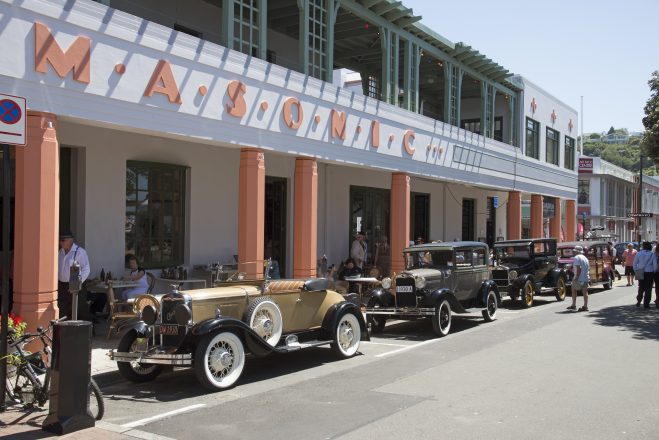세계 아르데코 수도에 오신 것을 환영합니다.네이피어의 광범위한 아르 데코 건물 컬렉션은이 타이틀을 획득하여 도시에 독특한 스타일을 부여하고 매년 수천 명의 관광객을 끌어 들이고 특히 유명한 아르 데코 페스티벌 (Art Deco Festival) 에 있습니다.
1931년 뉴질랜드는 7.8 규모의 지진이 혹스베이를 흔들었을 때 가장 치명적인 자연 재해 중 하나를 겪었습니다.이 지진은이 지역을 황폐화시켜 256 명이 사망하고 수천 명이 더 부상을 입으며 네이피어 도시를 평준화시켰다.
CBD가 재건되었을 때, 많은 건물은 1930 년대에 인기를 얻었던 유럽에서 시작된 접근 방식 인 원래 아르 데코 스타일로 돌아 왔습니다.디자인 테마에는 햇살, 분수, 기하학적 모양, 마천루 모양, 속도, 힘 및 비행의 상징이 포함됩니다.헤이스팅스에는 아트 데코 스타일의 건물도 많이 있습니다.
아르데코 시대는 낙천주의, 이상주의, 탈출의 시대였으며, 모두 네이피어 건물과 지역 주민들의 시대 구체화에서 표현됩니다.
도보, 빈티지 자동차 또는 버스를 타고 가이드 투어를 통해 세계 최고의 아르데코 건물의 사례를 살펴보고 도시 재건과 관련된 사람들의 비하인드 스토리를 배우십시오.이 활기찬 시간을 진정으로 경험하려면 매년 2월에 일주일 동안 열리는 상징적 인 축하 행사인 Art Deco Festival 에 참여하십시오.댄스 레슨, 피크닉, 저녁 식사, 공, 베이킹 대회, 거리 공연, 곡예 비행 디스플레이 등 300 개 이상의 이벤트를 자랑하는 유명한 축제를 위해 매년 수천 명이 네이피어에 모여 있습니다.





























































